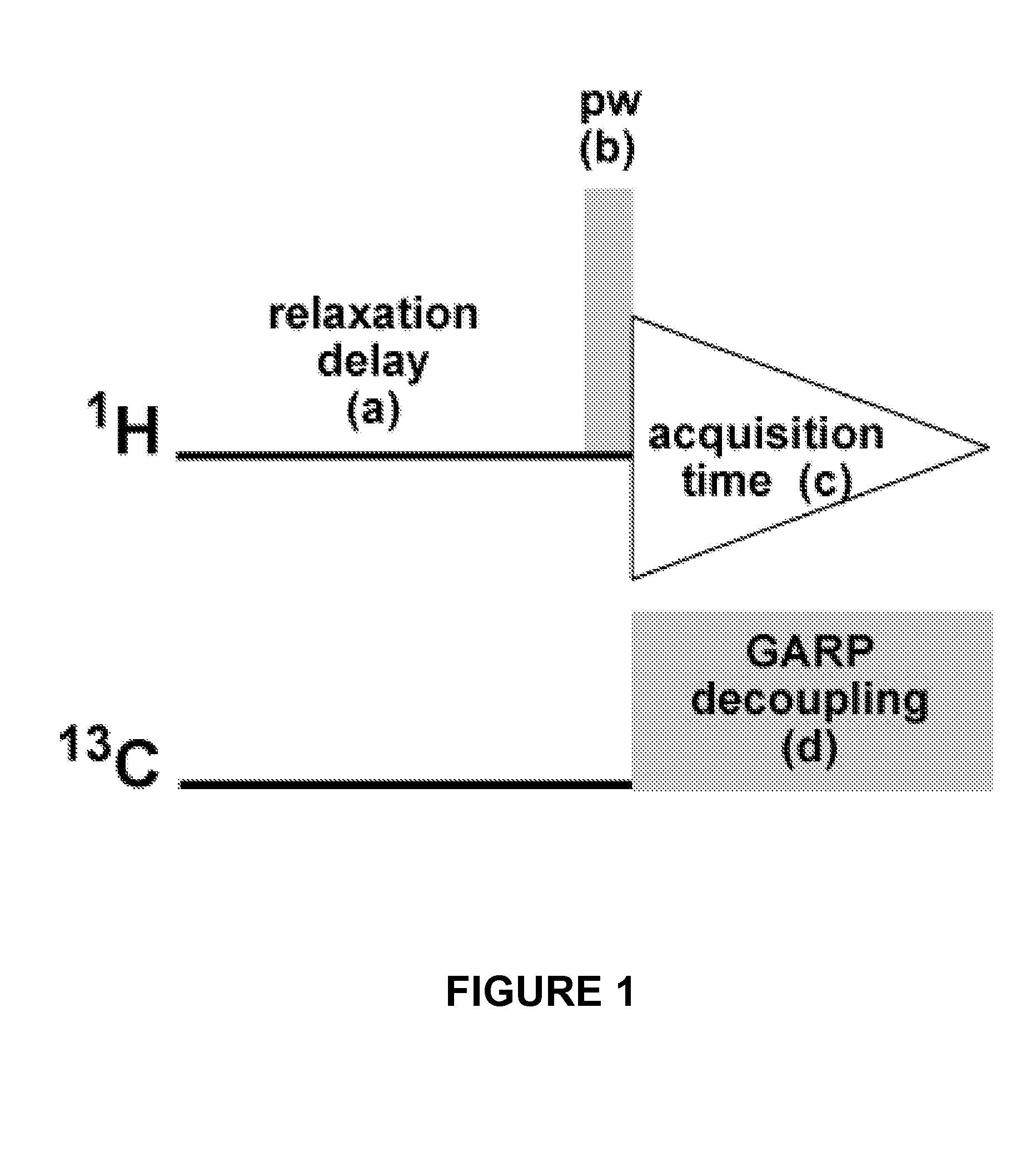Nuclear Magnetic Resonance Method for Quantitative and Qualitative Measurement of Natural Products
a technology of nuclear magnetic resonance and quantitative and qualitative measurement, applied in the direction of nuclear magnetic resonance analysis, measurement using nmr, instruments, etc., can solve the problems of unrealistic practical quantification, difficult to obtain useful and reliable quantitative information, and standard techniques for providing and assessing purity, such as chromatographic purity
- Summary
- Abstract
- Description
- Claims
- Application Information
AI Technical Summary
Benefits of technology
Problems solved by technology
Method used
Image
Examples
example 1
qHNMR Operating Parameters
[0046]Quantitative 1H NMR (qHNMR) provides a value-added dimension to the standard spectroscopic data set involved in structure analysis, especially when analyzing bioactive molecules and elucidating new natural products. The qHNMR method can be integrated into any routine qualitative workflow without much additional effort by simply establishing quantitative conditions for the standard solution 1H NMR experiments. Moreover, examination of different chemical lots of taxol and a Taxus brevifolia extract as working examples provides a blueprint for a generic approach to performing a routinely practiced 13C-decoupled qHNMR experiment, and for recognizing its potential and main limitations. The protocol is based on a newly assembled 13C GARP broadband decoupled proton acquisition sequence that reduces spectroscopic complexity by removal of carbon satellites. The method is capable of providing qualitative and quantitative NMR data simultaneously and covers vario...
example 2
qHNMR Illustrated with Taxol
[0067]The qHNMR evaluation of taxol reference materials and related samples. In order to demonstrate the suitability of the proposed qHNMR method, taxol is used as a model analyte in the form of three different samples (Table 1): reference materials of varying purity of taxol (taxol A-C), a structurally related compound (taxoid D), and a crude extract of Taxus brevifolia bark. All five samples are subject to qHNMR analysis and their (im)purity profiles are quantitatively evaluated. Quantitative calculations are performed under the qualitative assumption that structurally related analogues, as evident from marker signals similar to those of taxol, are present as impurities.16 Due to the close structural similarities of the taxoids, the assumption is made that the molecular weight of the taxoid impurities is similar to taxol, and the identical mass (854 amu) is taken into account as a fictitious weight. This approach has empirically been proven to provide v...
example 3
Metabolome Analysis
[0072]Application of the method to metabolome analysis is provided in a model system by the lower quantitation level of a structurally complex phytochemical contained in a chemically diverse mixture. Accordingly, a crude extract of Taxus brevifolia bark is analyzed by qHNMR as described, and taxol as a minor constituent in this crude metabolome mixture is determined to be present in the amount of 3.1(2) %. Due to severe signal overlap in this very complex T. brevifolia bark extract, additional processing of the qHNMR spectrum is necessary. The only signal that is sufficiently isolated and amenable for quantitation is the signal of H-10 at 6.250 ppm. Prior to integration, interfering signals resulting from the numerous other components contained in the extract, which are convoluted to an underlying hump, are line-fitted and subtracted from the spectrum. In addition, it is evident from the analysis of the taxol reference materials A-C that the integral for H-10 had ...
PUM
 Login to View More
Login to View More Abstract
Description
Claims
Application Information
 Login to View More
Login to View More - R&D
- Intellectual Property
- Life Sciences
- Materials
- Tech Scout
- Unparalleled Data Quality
- Higher Quality Content
- 60% Fewer Hallucinations
Browse by: Latest US Patents, China's latest patents, Technical Efficacy Thesaurus, Application Domain, Technology Topic, Popular Technical Reports.
© 2025 PatSnap. All rights reserved.Legal|Privacy policy|Modern Slavery Act Transparency Statement|Sitemap|About US| Contact US: help@patsnap.com



